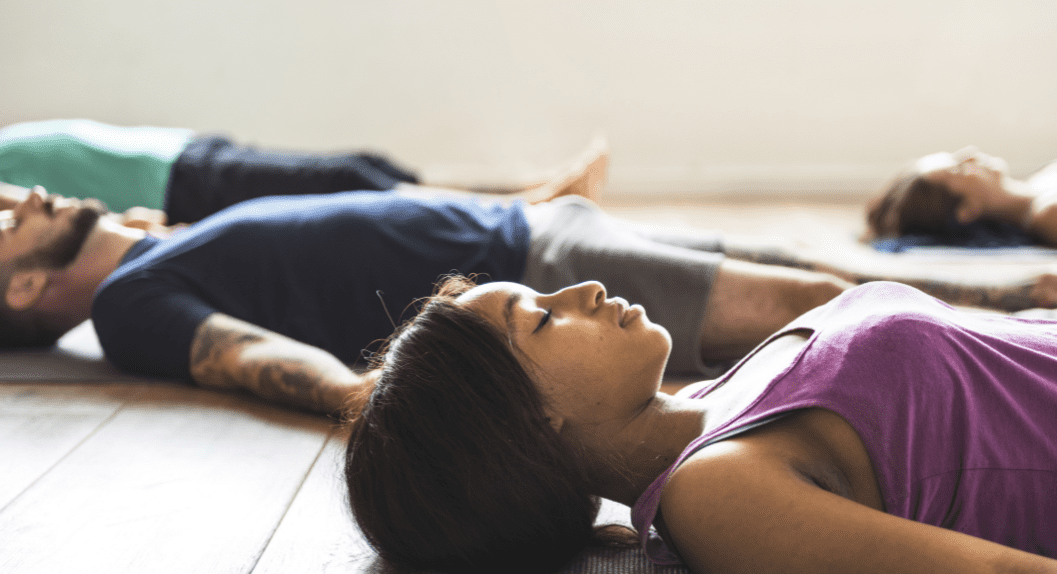Ayurveda is usually translated as the science of longevity. The intention of Ayurveda is to bring our doshas, or bio-energy-body types, into balance so that we can experience optimum physical and mental health, which can support our spiritual growth.
Since the intention in Ayurveda is to bring the doshas into balance, every aspect of our lifestyle can be a means for doing that, including Yoga. Our diet, our sleep habits, and practically every aspect of our lifestyle regime, including Yoga practices, can be directed through the principles of Ayurveda. In Ayurveda, the understanding is that if we are experiencing symptoms of illness or disease, a dosha is elevated or out of balance. The Ayurvedic approach to healing is to counter the elevation—often by doing the opposite—to bring the dosha into balance.
For example, if it is summertime and we are hot, what do we do? We counter that heat by taking a cold shower, sitting in the shade, swimming, or cooling off in the air conditioning. If it is rainy and cold outside and we are feeling some symptomatic reactions, we want to counter them by staying warm and dry, perhaps by drinking hot herbal tea or exercising. Ayurveda includes many strategies. The more knowledge we have, the more we can strategize about how to be in balance.
However, it can be a challenge for students and Yoga teachers to incorporate knowledge of Ayurveda into their practice and teaching. Teachers have the challenge of teaching a multi-dosha class! The strategies for adapting classes to accommodate all types can be pretty simple or sophisticated. We will explore sophisticated strategies during the workshop that I’ll be leading at Yogaville, Yoga for Your Dosha: Find Balance with Ayurveda. We will focus on all key parts of Yoga through the limbs of Ayurveda, including asana, pranayama, meditation, mantra, and working with five pranas (energies). Participants will leave the program with more skills and strategies to choose from when fine-tuning their practice or class. Below you’ll find some general suggestions and tips for personalizing your own practice based on your predominant dosha.
A general understanding we can have when applying Ayurvedic principles to our Yoga practice is that if we leave class feeling calm and alert, we probably did the right practice.
Profile of doshas:
Think of the doshas as personality types. There are no good or bad doshas. When they are in balance, they all have beautiful qualities and strengths.
Pitta—Element Fire + Water

Key Strategy for Pitta Types: Cool down and chill out.
Qualities of Balanced Pitta Types:
- Excellent leadership
- Intelligent
- Good memory
- Organized
- Driven
Symptoms of Pitta Elevation:
- Inflammation
- Heat
- Irritability, anger
- Skin conditions like psoriasis
Yoga for Pitta Types:
Pittas are often drawn to challenging Hatha classes—more so than everyone else. This may include Integral Yoga Hatha 3 classes, Hot Yoga, and difficult asanas such as handstands. However, this can be a recipe for overheating. A key strategy for pittas is to engage in a practice where they focus more on relaxing rather than trying to achieve something or overdo it.
Vata—Element Air + Ether

Key Strategy: Slow down and get grounded.
Qualities of Balanced Vata Types:
- Creative
- Enthusiastic
- Intelligent
- Focused
- Relaxed
Symptoms of Vata Elevation:
- Anxiety
- Insomnia
- Short attention span
- Forgetfulness
- Nervousness
- Fear
- Racing mind
Yoga for Vata Types:
Vata types are going to be drawn to movement. But just because they love it, doesn’t mean that it is the best thing for them. Grounding, calming practices can be helpful for Vata types, as can warming practices, as they tend to be cold.
Kapha—Element Earth + Water

Key Strategy for Kaphas: Get moving and stay challenged.
Qualities of Balanced Kapha Types:
- Grounded
- Loyal
- Devotional
- Serving
- Dependable
Symptoms of Kapha Elevation:
- Lethargy
- Depression
- Weight gain
- Unmotivated
- Possessive
Yoga for Kapha Types
Kaphas are drawn to gentle, relaxing practices—ones that might not require much movement, if any. As such, they often need more stimulating and vigorous practices.



